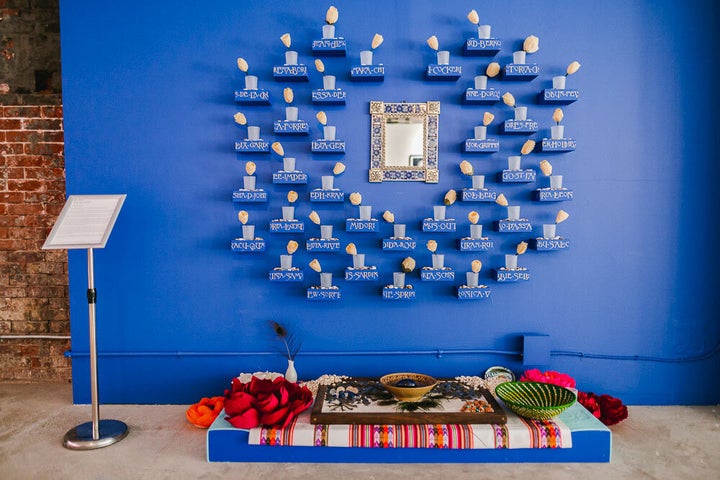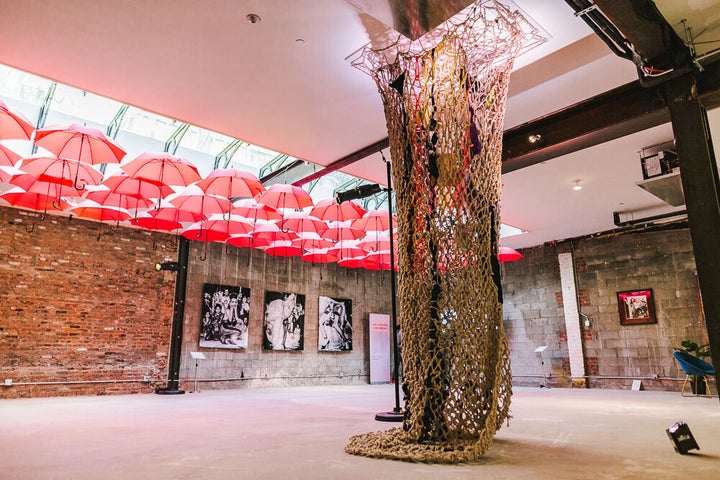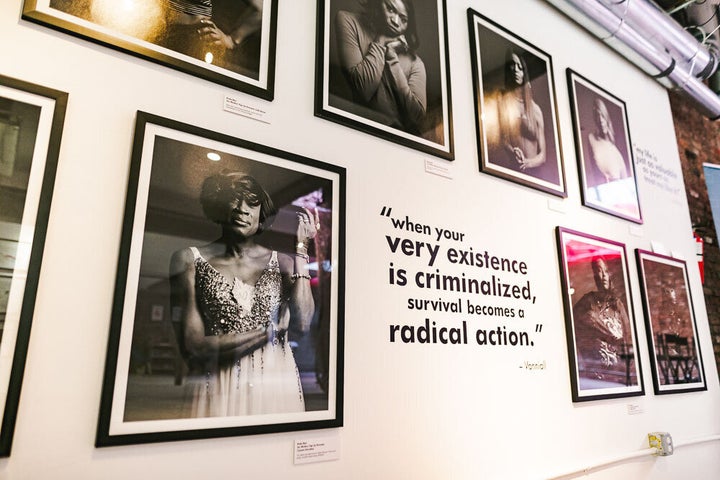After a variety of different career endeavors, Jacqueline Francis knew she’d found a personal calling when she tried stripping for the first time.
“I never felt shame,” Francis, known professionally as Jacq the Stripper, told HuffPost. “I was like, ‘Look at this money!’ It’s faster than any other money. That was it for me. I just did it and found it really interesting. I still find it interesting.”
Stripping, as it turns out, also led Francis back to her first love: art. Her series of single-panel, graphic novel-style cartoons are currently on display at the Sex Workers’ Pop-Up, a New York exhibition that aims to reframe the dialogue and shatter the lingering, if cringingly outdated, stigma around sex work.
The multimedia gallery, which opened Monday in the heart of Manhattan’s Greenwich Village neighborhood, comprises more than 50 pieces by 22 artists, 17 of whom have backgrounds in the sex industry. A year in the making, the exhibit takes an in-depth look at sex work and was co-organized by the Open Society Foundations ― a global grant-making network dedicated to “justice, democratic governance and human rights.” Altogether, more than 10 countries are represented.
“People generally have a very simplistic idea of what sex work is and who sex workers are,” Sebastian Köhn, the Open Society Foundations’ director of sexual and reproductive rights, told HuffPost. “If you have people looking down on you just for the work you do, that’s going to have implications for so many different areas of your life.”

The centerpiece of the Sex Workers’ Pop-Up is “InVocation,” a sculptural installation by Japanese American artist Midori, who is based in San Francisco. The floor-to-ceiling display is constructed with hemp rope, into which personal objects ― including an earring and a scrap of a wig ― owned by queer sex workers have been woven.
Other poignant displays include photographer Kisha Bari’s portrait series of Black sex workers, many of them transgender. Another must-see is Pluma Sumaq’s “Nuestra Suerte en la Arena” (or “Our Blessings in the Sand”), designed as an altar paying tribute to 38 “elders” in the sex worker community.

By far the most visually striking, however, is a grid of red umbrellas ― a global symbol of sex worker rights across the globe ― created by New York artist Sun Kim and installed on the gallery’s ceiling.
The Sex Workers’ Pop-Up also relays the various challenges the community continues to face. A 2014 study, for example, found that sex workers have a 45% to 75% chance of experiencing sexual violence at some point in their careers. Given their overall exclusion from health, legal and social services, many of those workers have little recourse.
Tiffany Cabán, who made the decriminalization of sex work part of her platform last year when she ran for Queens County District Attorney, is hopeful the exhibit encourages New Yorkers to support efforts for policy change within the industry.

“It is, constantly and consistently, the folks that are on the margins of the margins that put their bodies and their lives on the line for our collective liberation,” she told HuffPost at the pop-up’s opening gala. “To stand with them, to support them, means the world to me.”
Likewise, Köhn is hopeful visitors come away from the exhibit with “a more nuanced idea” of sex work that could, eventually, amount to a legislative shift.
“We hope people come into this space to have their ideas challenged,” he said, “and leave with a more [complex] view of sex workers and their needs.”
The Sex Workers’ Pop-Up runs through March 16 in New York.
Calling all HuffPost superfans!
Sign up for membership to become a founding member and help shape HuffPost’s next chapter
